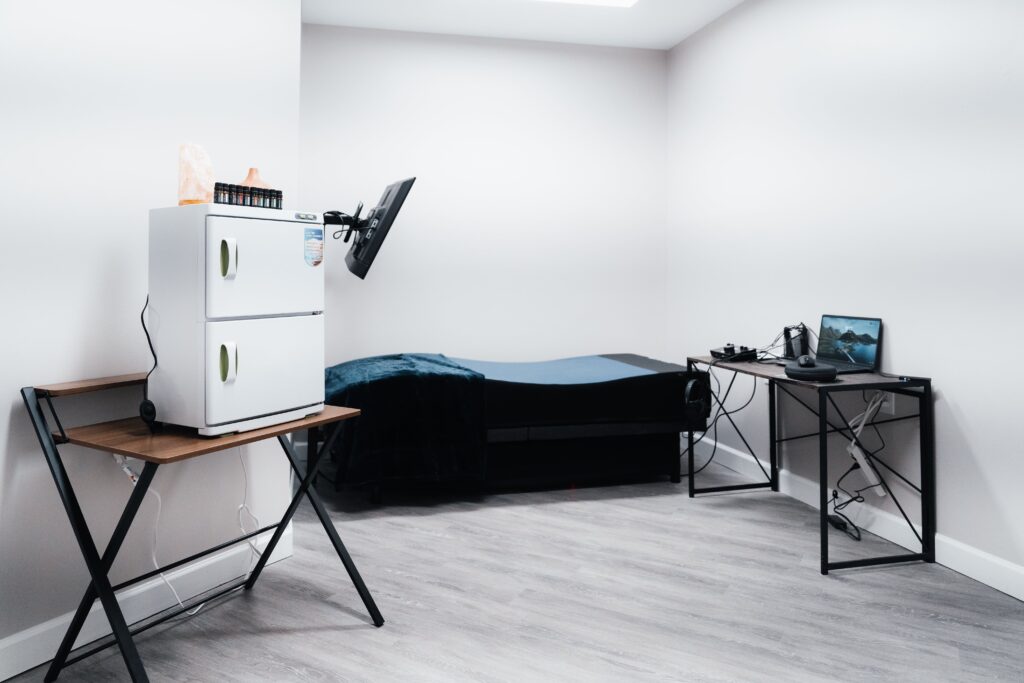Borderline Personality Disorder (BPD) affects approximately 1.6% of adults in the United States, causing significant disruption to emotional regulation, interpersonal relationships, and overall quality of life.
While BPD is recognized as a single diagnosis in the Diagnostic and Statistical Manual of Mental Disorders (DSM-5), clinicians and researchers have identified several distinct subtypes that help better understand how this complex condition manifests differently across individuals.
One of these subtypes is Petulant BPD, characterized by specific behavioral and emotional patterns that differ from other BPD presentations.
This article explores the nuances of Petulant BPD, providing insight into its symptoms, causes, diagnosis, and treatment options. By understanding this particular subtype, individuals and their loved ones can better navigate the path toward healing and recovery.
Understanding Petulant BPD
Petulant BPD is one of four subtypes of Borderline Personality Disorder identified by psychologist Theodore Millon.
Unlike the official DSM-5 diagnosis, which doesn’t formally recognize these subtypes, Millon’s classification helps clinicians better understand the varied presentations of BPD and tailor treatment approaches accordingly.
The four subtypes include:
- Discouraged/Dependent BPD: Characterized by neediness, clinginess, and fear of abandonment
- Impulsive BPD: Marked by recklessness, thrill-seeking, and charismatic but superficial relationships
- Self-Destructive BPD: Focused inward with self-hatred and self-punishment
- Petulant BPD: Distinguished by unpredictability, irritability, and passive-aggressive behavior
Petulant BPD specifically involves a pattern of chronic irritability, dissatisfaction, impatience, and unpredictable mood swings. Individuals with this subtype often experience intense ambivalence in relationships, simultaneously craving connection while fearing dependence and disappointment. This inner conflict manifests as defiant, passive-aggressive, and sometimes controlling behaviors, creating significant challenges in interpersonal relationships.
Signs and Symptoms of Petulant BPD
Petulant BPD shares the core features of all BPD, including emotional instability, identity disturbances, and relationship difficulties. However, it also has distinct characteristics that set it apart:
Emotional Symptoms:
- Persistent feelings of dissatisfaction and discontent
- Chronic irritability and anger that can erupt unexpectedly
- Unpredictable and rapid mood swings
- Intense feelings of being misunderstood or unappreciated
- Alternating between feelings of unworthiness and entitlement
- Deep-seated fear of rejection and abandonment
Behavioral Symptoms:
- Passive-aggressive behavior when needs aren’t met
- Sulking, complaining, and being argumentative
- Unpredictable defiance and opposition to authority figures
- Tendency to be demanding and controlling in relationships
- Propensity to test relationships by creating conflict
- Pattern of pushing people away then becoming desperate when they leave
- Difficulty accepting responsibility, often blaming others
- Vengeful thoughts or actions when feeling wronged
Cognitive Symptoms:
- Black-and-white thinking (idealizing and devaluing others)
- Tendency to hold grudges
- Suspiciousness and distrust of others’ motives
- Pervasive sense of being victimized or treated unfairly
- Difficulty seeing one’s role in interpersonal problems
The symptoms of petulant BPD typically cause significant distress and impairment in social, occupational, and other important areas of functioning. They create a pattern of unstable relationships characterized by alternating between dependence and hostile withdrawal.
Causes of Petulant BPD
Like other forms of BPD, Petulant BPD likely develops from a complex interaction of genetic, neurobiological, and environmental factors.
No single cause of Petulant BPD has been identified, but several contributing factors have been associated with its development:
Genetic and Biological Factors:
- Hereditary predisposition (BPD is about five times more common among first-degree relatives)
- Neurobiological differences in brain structure and function, particularly in areas regulating emotion and impulse control
- Dysregulation in neurotransmitter systems, especially serotonin
Environmental and Developmental Factors:
- Childhood trauma, including emotional, physical, or sexual abuse
- Neglect or invalidation of emotional experiences during formative years
- Inconsistent or unpredictable parenting
- Early separation from caregivers or disrupted attachment
- Exposure to hostile conflict, particularly between parents
For the petulant BPD subtype specifically, some researchers suggest that a developmental history characterized by both overindulgence and inconsistent discipline might contribute to the characteristic patterns of entitlement combined with resentment and passive-aggressive behavior.
It’s important to note that not everyone who experiences these risk factors will develop petulant BPD, and not everyone with BPD has experienced all these factors. The development of the disorder reflects a complex interplay between biological vulnerability and environmental circumstances.
Diagnosing Petulant BPD
The formal diagnosis of Borderline Personality Disorder is based on criteria outlined in the DSM-5, which requires at least five of nine specific symptoms to be present. These include:
- Frantic efforts to avoid abandonment
- Unstable and intense relationships
- Identity disturbance
- Impulsivity in potentially self-damaging areas
- Recurrent suicidal ideation or self-harm
- Affective instability
- Chronic feelings of emptiness
- Inappropriate or intense anger
- Transient paranoid ideation or dissociative symptoms
While the DSM-5 doesn’t officially recognize the petulant subtype, mental health experts may note the specific pattern of symptoms that characterize petulant BPD during assessment.
Diagnosis typically involves:
- Comprehensive clinical interviews
- Psychological assessments and questionnaires
- Review of medical and psychiatric history
- Ruling out other conditions with similar presentations
It’s crucial that diagnosis is performed by qualified mental health professionals with experience in personality disorders.
Misdiagnosis is common with BPD, particularly due to symptom overlap with bipolar disorder, PTSD, and other personality disorders. For the petulant BPD specifically, clinicians may note the prominence of anger, passive-aggressive tendencies, and relationship patterns characterized by control and testing behaviors.
Treatment Options for Petulant BPD
While BPD was once considered difficult to treat, significant advances in therapeutic approaches have dramatically improved outcomes. Treatment for Petulant BPD typically involves a combination of psychotherapy, sometimes supplemented with medication for specific symptoms. Effective approaches include:
Psychotherapy:
- Dialectical Behavior Therapy (DBT): Considered the gold standard for BPD treatment, DBT combines individual therapy, skills training groups, phone coaching, and therapist consultation teams. It focuses on developing mindfulness, emotion regulation, distress tolerance, and interpersonal effectiveness. For petulant BPD specifically, DBT can help address anger, impulsivity, and relationship difficulties.
- Mentalization-Based Therapy (MBT): Helps individuals understand their own and others’ mental states, improving interpersonal relationships and emotional regulation. This can be particularly helpful for the black-and-white thinking common in petulant BPD.
- Schema Therapy: Identifies and addresses maladaptive schemas (patterns of thought and behavior) developed in childhood. This approach may help with the underlying feelings of abandonment and mistrust characteristic of petulant BPD.
- Transference-Focused Psychotherapy (TFP): Uses the therapeutic relationship to help patients understand their distorted perceptions of themselves and others. For petulant BPD, this can help address the tendency to test relationships and engage in passive-aggressive behavior.
Medication:
While no mental health medications specifically treat BPD, certain medications may help manage specific symptoms:
- Antidepressants for co-occurring depression or anxiety
- Mood stabilizers for mood volatility and impulsivity
- Low-dose antipsychotics for anger, hostility, or paranoid thinking
- Anti-anxiety medications (used cautiously and typically short-term)
Other Therapeutic Approaches:
- Group therapy: Provides peer support and opportunities to practice interpersonal skills
- Family therapy: Helps family members understand BPD and develop healthier interaction patterns
- STEPPS (Systems Training for Emotional Predictability and Problem Solving): A group treatment program specifically designed for BPD
Treatment for petulant BPD often emphasizes developing healthy outlets for anger, improving frustration tolerance, and fostering more direct and effective communication strategies to replace passive-aggressive behaviors.
Find Professional Treatment for Petulant BPD Today
If you or someone you love is struggling with symptoms of Petulant BPD, seeking professional help is an essential first step toward recovery.
At Arbor Wellness, we offer comprehensive, evidence-based mental health treatment programs in Nashville tailored to the unique needs of individuals with Borderline Personality Disorder and its various subtypes.
Our team of experienced clinicians understands the specific challenges of Petulant BPD and provides compassionate, non-judgmental care in a supportive environment. We believe in treating the whole person, not just the diagnosis, and work collaboratively with our clients to develop personalized treatment plans that address their individual goals and needs.
Call us now at 629-217-2658 or verify your insurance now.

























